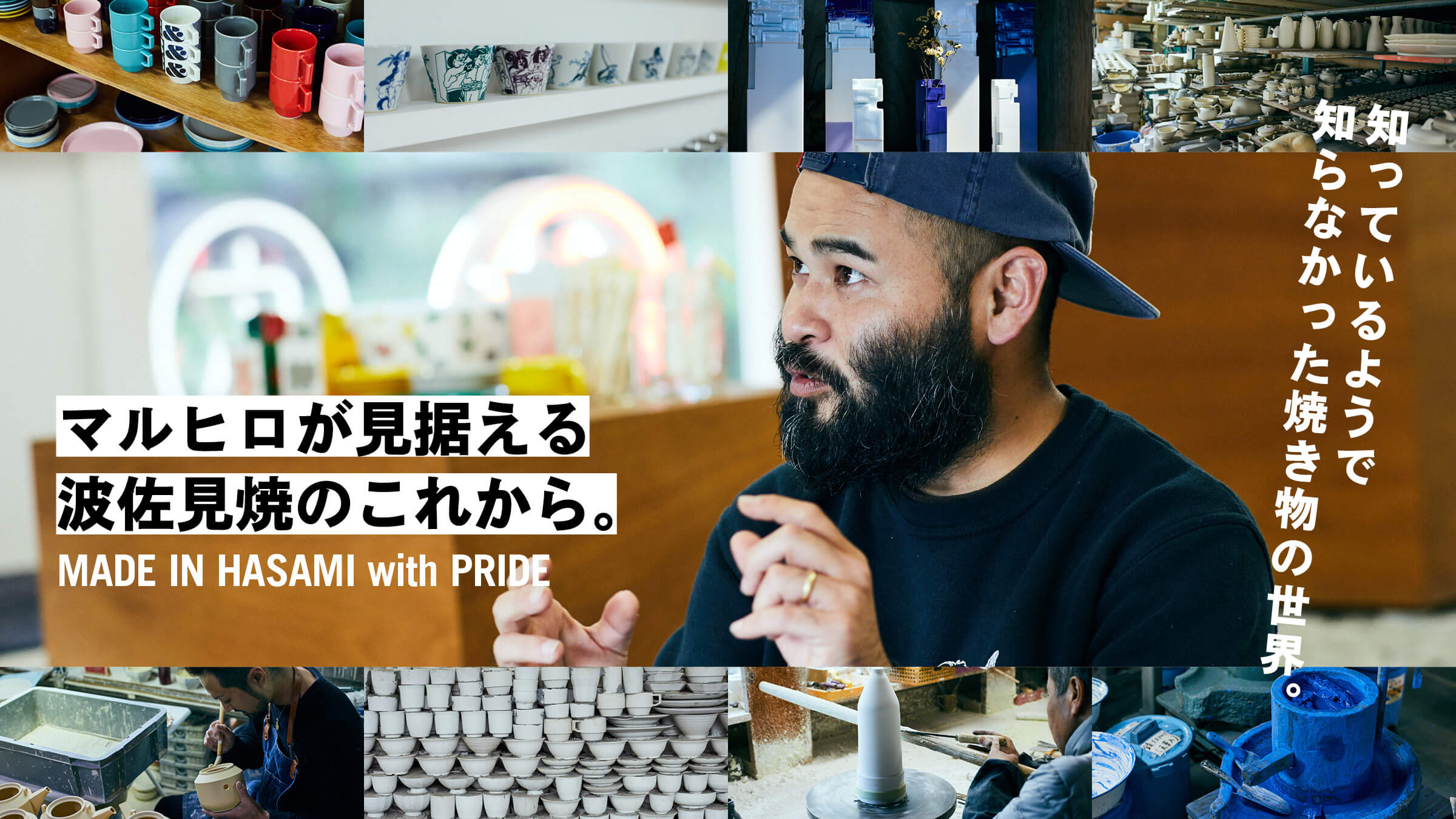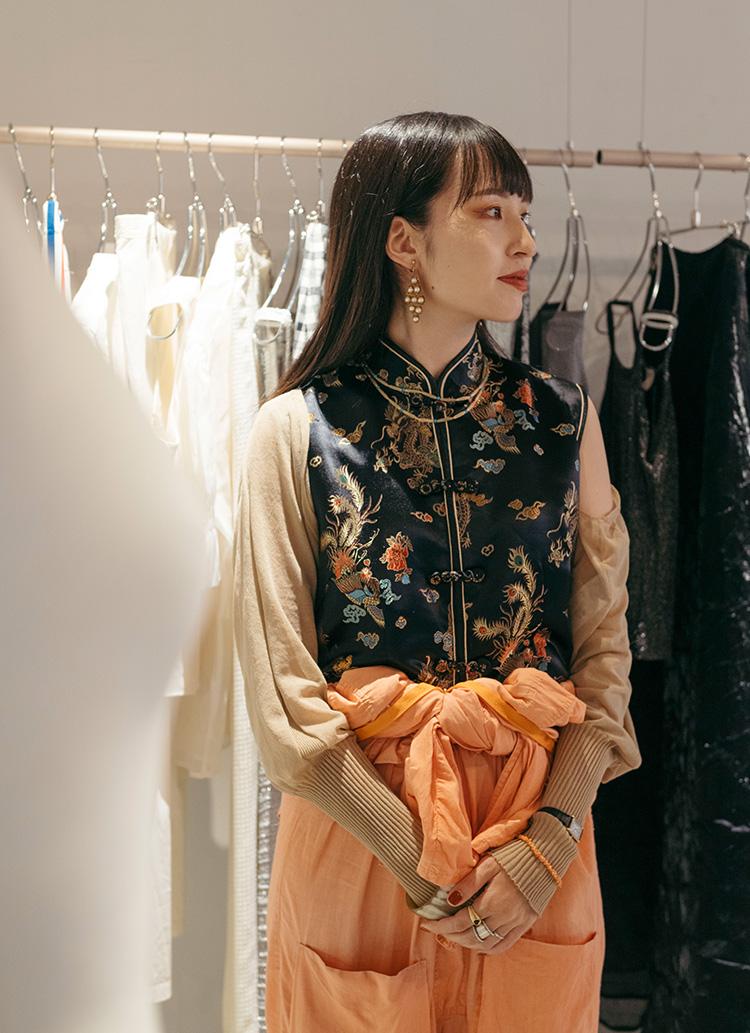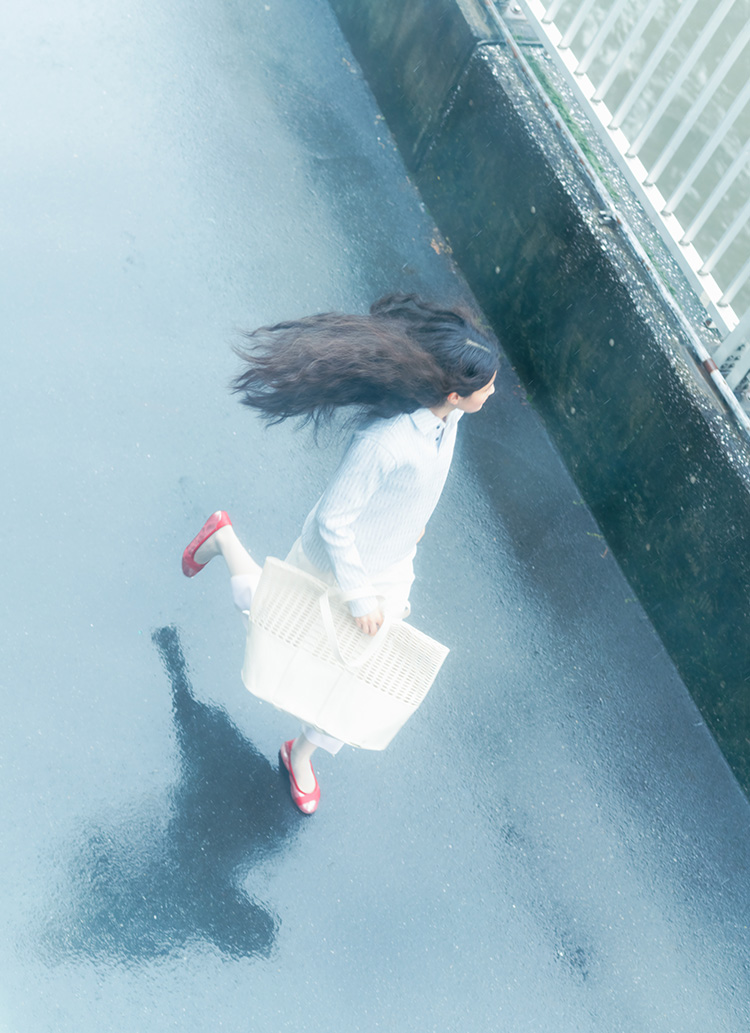The past and present of Hasami-ware that supported the dining tables of the masses.

Hasami Town has a beautiful view of the mountains with a good vantage point from which to see. The air is clean and refreshing.
Hasami Town in Nagasaki Prefecture is the only inland town in Nagasaki facing the sea. It is a little over 40 minutes by car from Nagasaki Airport. Beyond the window, a peaceful landscape spreads out, and looking into the distance, jagged mountain ridges form the boundary between the sky and the ground.

In Nakao-go, which I visited during my research, Hasami pottery is used as tiles,
A large pottery sits proudly as shown in the photo.
The pottery produced in Hasami-cho is, as the name implies, Hasami-yaki. The Kyushu region is also famous for Arita and Imariyaki, known for their gorgeous decorations and paintings, but Hasami-yaki is more of a folkloric style. It is popular for tableware and other daily necessities that support people's daily lives.
The history of pottery is that it has been made for at least about 400 years. One of the characteristics of this culture is that it has matured while taking advantage of its geographical location: pottery stones and clay, the raw materials for pottery, are available in Kyushu, while various techniques and ideas were brought in from the Chinese mainland and the Korean peninsula.


There is also a Hasami-ware museum in Hasami-cho, where you can learn about the detailed history of Hasami-ware. Many excavated artifacts are also on display.
The production of pottery for daily use began around the 1690s. Prior to that time, exports to Europe during the civil war had been a major source of income for the producers, but as the conflict subsided, production in China became more active and exports decreased. This led to the production of large quantities of inexpensive daily tableware for the Japanese market, which was then exported to the rest of the country.
Pottery born during that period is called "kurawanka bowls. This is because at that time, there were ferry boats that went to and from the Yodo River in Osaka, and there were also tea boats that approached their passengers with "sake kurawanka" and "rice kurawanka. Many of the tableware used on these boats was Hasami-ware. In addition, of course, Hasami-ware tableware was also used throughout the country, and has been used everywhere to decorate Japanese dining tables.





A variety of Maruhiro's Hasami-ware displayed in a modern space.
Customers came incessantly from morning to evening, some of them collectors.
Let's return to the present day. In the photo is the store of Maruhiro, a trading company in Hasami-cho. Here, they plan and sell their own original brand of Hasami-yaki pottery and wholesale it to various stores. Maruhiro's appeal lies in the fact that they produce not only traditional Japanese tableware, but also modern designs and art pieces in collaboration with various brands. The archives of art pieces we have produced so far arethis way (direction close to the speaker or towards the speaker)You can view it at

Baba-san is the third generation of "MARUHIRO". He says that he goes back and forth to the factory of artisans every day.
Here is the representative, Mr. Shohei Baba. He is an attentive and kind person who always creates a funky and friendly mood. Baba says, "The characteristic of Hasami-ware is the division of labor in production. The finished dough is unglazed at the kiln, then painted and glazed, and finally fired again. Finally, the potteries are fired again. Each of these processes takes place in a different location, and each step is carried out by specialized craftsmen who pour their sweat and expertise into their work.
This time, Baba guided us through the process of mold making, dough making, glaze making, and painting and firing at the kiln. There was a surprisingly detailed and analog world spread out before us.












